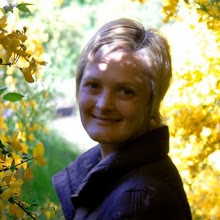July 30, 3009
As all mornings following an overnight bus, Thursday started super-early with our 5:30 a.m. arrival in La Paz. We dropped our luggage off at the hostel and went to a 24-hour cafe (Cafe Ciudad) to wait for the city to awaken.
As we entered the quiet restaurant, a woman in a corner table yelled, “Hello, Ladies!” We looked, she waved, and we dismissed her as drunk. I went to the bathroom, and came out of the stall just as a man entered.
He looked slightly disoriented, and I wondered if he could really be lost enough to have missed the men’s room right next door. He started talking to me, and it appeared he’d followed me into the restroom. He held out a folded paper, which I presumed contained his number or a message, and said “Bienvenido a Bolivia,” I accepted it, assessing him to be around 50. “Es muy buena,” he said. Odd.
He finally left and I opened the paper. It contained a fine white powder. Scenes from a dozen different movies where tourists are set up on drug charges passed through my mind, and I quickly deposited the packet on the sink.
I made it back to the table and noted he was seated at the table with the woman who’d yelled to us when we entered. A minute later, he came over and introduced himself. He was a congressman. “How was it?” he asked. “I don’t know yet,” I answered carefully, not wanting to risk any problems.
Luckily, just then the waiter ushered him away. He receded to the back of the large restaurant, by the bathrooms and I regretted not throwing his “gift” away. Surely he’d enter and see the abandoned gift. I avoided the bathrooms as we killed time in the restaurant, but Tammy was so unnerved we didn’t stay long.
At one moment, he sat at the table next to us to make a phone call, and she was done.
We started the Lonely Planet walking tour (which is really more an exercise in map reading), praying the sites of interest would be open by the time we walked to them.

 We visited another Iglesia de San Francisco, with a very detailed mestizo facade and an interesting altar with random, indigenous faces popping out. Angels?
We visited another Iglesia de San Francisco, with a very detailed mestizo facade and an interesting altar with random, indigenous faces popping out. Angels?
Next, we headed through the artisan alley (which was mostly closed) to the Mercado de Hechicería (Witches Market), a couple blocks of stores selling traditional medicines, charms, and lucky llama fetuses.

Apparently, the dried membranes are considered a sacrifice, and buried for good luck. (Fotos available.)
Our visit then took us to the “black market” which we never really lcated, but also didn’t feel compelled to invest much energy or time on.
We found the Mercado Lanza, which was like a drugstore cosmetics counter, set under market tents, and then visited the Museo Tambo Quirquincho, which mostly displayed prints of their featured artist’s work. However, the building was nice and for one boliviano (15 cents), the price was right.
Next, we wandered over to the Plaza Murillo and enjoyed ice cream cones and people watching. The plaza was full of pigeons and the kids alternated between chasing them, and feeding them seeds sold by vendors in the plaza. We were too bus-lagged to realize we were surrounded by the presidential and legislative houses until hours later.
Once noon hit, we made a beeline for lunch at Yussef’s, a Lebanese restaurant where we shared the sampler platter: hummus, baba ganoush, falafel, dolmas, rice pilaf, tabbouli, pita bread, and a cucumber tzatziki salad. After a year without, the food was fabulous!
 In the afternoon we stopped by the Coca Museum, which was interesting and informative though not put together in a very coherent/objective manner.
In the afternoon we stopped by the Coca Museum, which was interesting and informative though not put together in a very coherent/objective manner.
 Finally, it was time to clean up and chill out. We both enjoyed hot, uninterrupted showers and some quiet time. Then, it was beer time!
Finally, it was time to clean up and chill out. We both enjoyed hot, uninterrupted showers and some quiet time. Then, it was beer time!
We headed upstairs to our hostel’s brewpub, where a pint turned into a pitcher turned into their Mexican buffet. Excellent, but way more than I needed! Diet, tomorrow!
















































